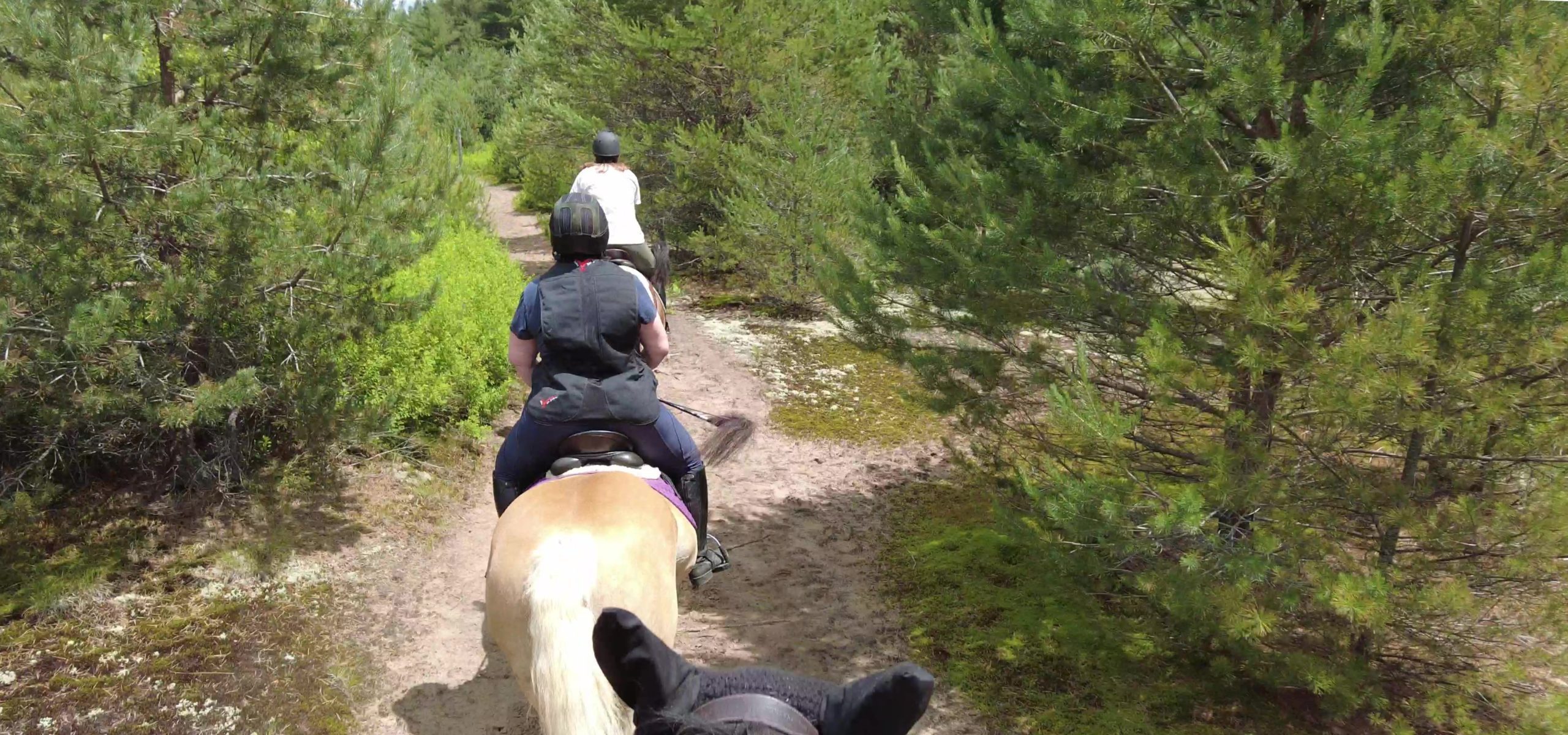
Riding out in nature under a full moon can be a wondrous experience. It’s quiet, your senses are heightened, and you become fully immersed in the stillness of your environment. Horses have much better night vision than humans and if you can’t see the trail, you just have to loosen the reins, put your full trust in your horse, and let them guide the way. This is an extraordinary experience.
Because it gets dark so late in the summertime, winter is the best time for moonlight rides. We especially love it when there is new snow on the ground. Combined with the full moon, the snow sparkles and reflects a surprisingly bright light, and we can listen to the swoosh-swoosh of our horses’ legs moving through soft powder.
Although horses have excellent night vision, it takes their eyes much longer to adapt to a change in light than our eyes do – up to 15 minutes. So, when you leave the barn and go out into the night, stand with your horse for several minutes before riding out.
Trail riding at night can be dangerous, even when brightened by a full moon. You and your horse should both be experienced and calm trail riders, not prone to fright. Do not ride on roads or anywhere that there could be dirt bikers, snowmobilers, or anyone else at all. Ride only on trails with good footing that you and your horse are familiar with, and that at least one person in your group has ridden recently, so you can be sure that there are no hazards such as holes, stumps, ice, mud, or fallen logs. Walk only. Bring a headlamp or flashlight but do not use it except in an emergency. Horses can spook when you turn a light on, and it will interfere with their night vision. Be smart and if something feels scary or risky, don’t do it.
My horse usually moves out very fast when we ride at night. It’s easy to assume that this means he likes it, but in fact it probably means he is nervous. Putting the horse who is most familiar with the trail in the lead is very helpful because it allows the other horses to follow with more confidence. Also, giving my horse time to adjust his vision and to stop and look around whenever he wants to helps him feel safe and relaxes him.

Fortunately, in the lower latitudes (such as the continental U.S., where we live) the full moon always rises in the early evening. The full moon is full is because it is on the opposite side of the earth from the sun – showing its fully lit face to us. As your spot on the earth rotates it moves away from the sun and towards the moon so the full moon rises as the sun sets. If you live in the far north of the Northern Hemisphere or far south of the Southern Hemisphere, this is not true, but you probably already know this.
Below is a calendar of good times for full moon rides in our neck of the woods – Vermont – in 2023. If you live somewhere else, you can figure out when to go by looking up the date of the full moon and time of moonrise at this website. I find it’s best to start my ride at least 1 1/4 hours after the moon rises to allow time for it to be high enough in the sky to provide light and so you can see it above the trees or hills. You might need to adjust this based on your area. You also need to look up the time when twilight ends (when it will be totally dark) at this other site because you can’t enjoy the full moon if it’s not dark out. In months when it gets dark quite late, we like to ride the day before the full moon because it’s almost as bright but comes up about an hour earlier.

Happy trails!
Monica
Note: The information presented herein is the opinion and experience of the author. Riding horses is inherently dangerous and unpredictable, and you must employ independent judgement in deciding what is best for you and your horse and use the information herein at your own risk.



I’ve done a lot of night xc skiing, but hope get out there on a winter’s eve one day soon!